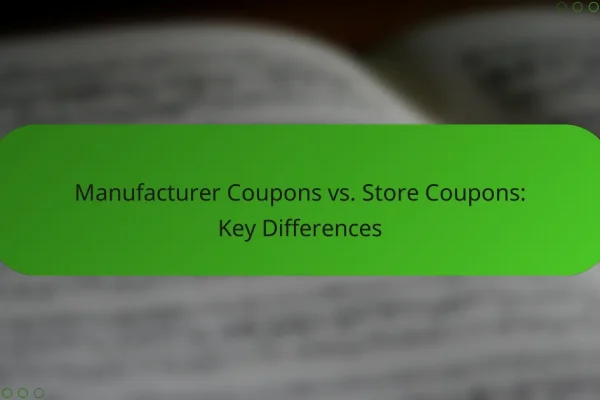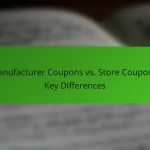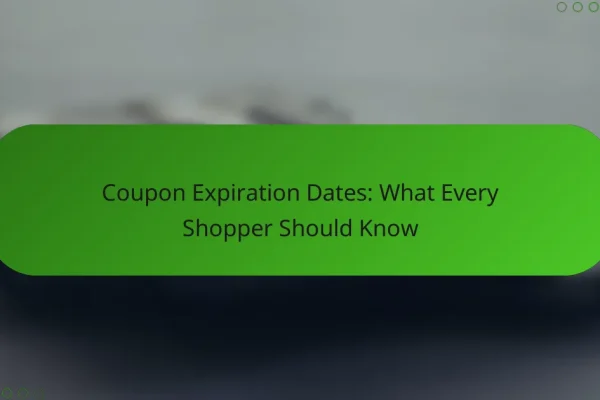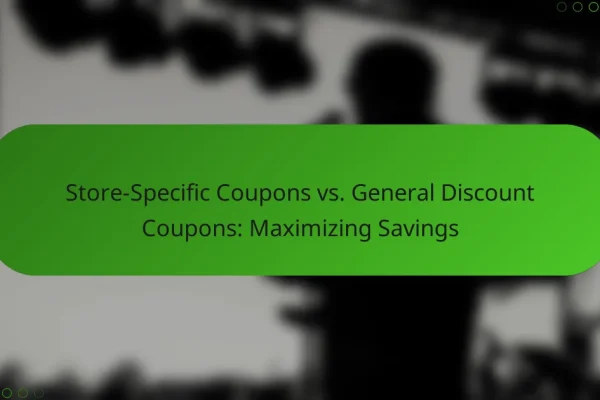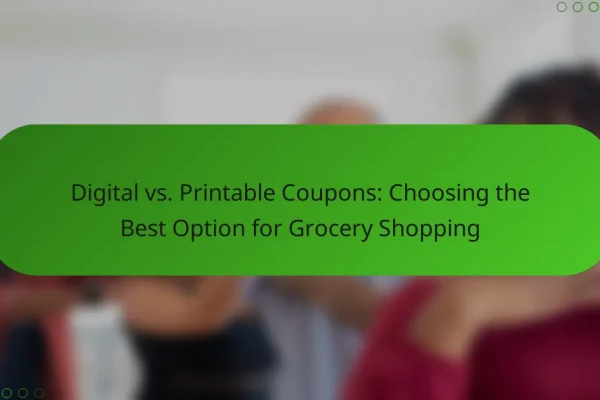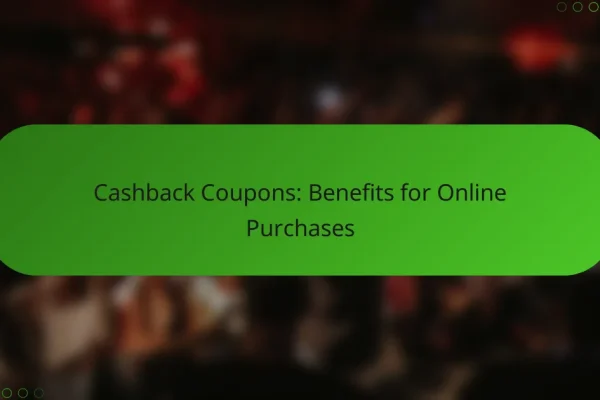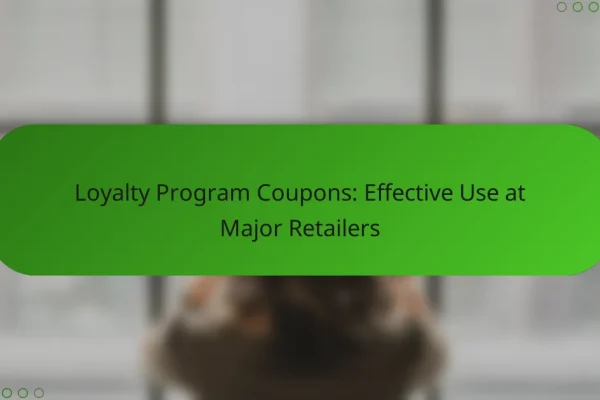What are the most common discount coupon types?
The most common discount coupon types include percentage-off, fixed amount-off, free shipping, buy one get one free (BOGO), and cashback offers. Each type serves a different purpose and can appeal to various customer preferences, making them effective tools for driving sales.
Percentage-off coupons
Percentage-off coupons provide a discount based on a percentage of the total purchase price. For example, a 20% off coupon on a $100 purchase would save the customer $20. These coupons are popular because they scale with the purchase amount, offering greater savings on larger transactions.
When using percentage-off coupons, consider any minimum purchase requirements that may apply. Some retailers may set a threshold, such as a minimum spend of $50, to qualify for the discount. Always check the terms to maximize savings.
Fixed amount-off coupons
Fixed amount-off coupons offer a specific dollar amount off the total purchase, such as $10 off a $50 order. This type of coupon is straightforward and can be appealing for customers looking for immediate savings. They are often used in promotional campaigns to encourage purchases.
Be aware of any restrictions, such as expiration dates or specific product categories that may not qualify for the discount. Understanding these details can help you effectively utilize fixed amount-off coupons.
Free shipping coupons
Free shipping coupons eliminate shipping costs on online orders, which can significantly enhance the shopping experience. Many customers prioritize free shipping, making these coupons a powerful incentive to complete a purchase. For instance, a coupon offering free shipping on orders over $25 can encourage customers to add more items to their cart.
Check for any conditions, such as minimum purchase amounts or geographic restrictions. Some retailers may only offer free shipping within certain regions or for specific products.
Buy one get one free (BOGO) coupons
Buy one get one free (BOGO) coupons allow customers to receive a second item at no additional cost when they purchase the first item. This type of coupon is effective for promoting products and increasing sales volume. For example, buying one shirt at $30 and getting another for free can entice customers to buy more than they initially planned.
Consider the implications of BOGO offers on inventory and customer behavior. These promotions can lead to increased foot traffic or online visits, but they may also result in lower profit margins if not managed carefully.
Cashback offers
Cashback offers provide customers with a percentage of their purchase amount returned to them after the transaction. For example, a 5% cashback offer on a $100 purchase would result in a $5 rebate. This type of coupon can be appealing for customers who appreciate receiving money back after their purchase.
Cashback offers may come with specific terms, such as requiring customers to sign up for a loyalty program or use a particular payment method. Understanding these conditions can help you take full advantage of cashback opportunities.
How do percentage-off coupons work?
Percentage-off coupons provide a discount based on a percentage of the total purchase price. For example, a 20% off coupon reduces the price of an item by 20% when applied at checkout.
Discount calculation method
The discount from a percentage-off coupon is calculated by multiplying the total price by the percentage. For instance, if an item costs $50 and you have a 15% off coupon, the discount is $7.50, making the final price $42.50.
To simplify calculations, you can use the formula: Final Price = Original Price – (Original Price x Discount Percentage). This method helps you quickly determine the savings before making a purchase.
Usage limitations
Percentage-off coupons often come with specific limitations, such as expiration dates, minimum purchase requirements, or restrictions on certain items. Always check the terms and conditions to ensure the coupon can be applied to your intended purchase.
Some retailers may limit the use of multiple coupons in a single transaction or exclude sale items from discounts. Understanding these limitations can help you maximize your savings and avoid disappointment at checkout.
What are fixed amount-off coupons?
Fixed amount-off coupons provide a specific discount, reducing the total price by a set dollar or euro amount. These coupons are straightforward and easy to understand, making them popular among consumers looking for clear savings on their purchases.
Typical values
Fixed amount-off coupons usually offer discounts ranging from a few dollars to several tens of dollars, depending on the retailer and the product category. For instance, a common coupon might provide $5 off a purchase of $25 or more, while others could offer $20 off a higher minimum purchase threshold.
Some retailers may also issue larger fixed discounts during special promotions or clearance events, which can reach up to $50 or more. Always check the terms to understand the minimum spend required to use the coupon effectively.
Best use cases
Fixed amount-off coupons are best used for larger purchases where the discount can significantly impact the total cost. They are particularly effective for items that are already on sale, allowing consumers to maximize their savings.
These coupons work well in scenarios such as bulk buying or when purchasing high-ticket items. However, avoid using them on low-cost items, as the discount may not provide substantial savings relative to the total price.
How do free shipping coupons benefit consumers?
Free shipping coupons provide consumers with significant savings by eliminating shipping costs, which can often add a substantial amount to the total purchase price. This benefit encourages shoppers to complete their transactions and can lead to increased spending on additional items.
Cost savings on shipping
Free shipping coupons directly reduce the overall cost of an order by covering shipping fees, which can range from a few dollars to over twenty dollars, depending on the retailer and shipping method. For consumers, this means they can save money, making products more affordable and encouraging larger purchases.
Many retailers offer free shipping as a promotional strategy, especially during peak shopping seasons. Consumers should look for these coupons to maximize their savings, particularly when buying multiple items or larger products that typically incur higher shipping costs.
Usage during promotions
Free shipping coupons are often available during special promotions, such as holidays or store anniversaries, making them an excellent opportunity for consumers to save. Retailers may combine these coupons with other discounts, further enhancing the value of the purchase.
To take advantage of these promotions, consumers should subscribe to newsletters or follow retailers on social media to stay informed about upcoming sales and coupon availability. Timing purchases around these promotions can lead to substantial savings, especially for larger orders.
What are the advantages of BOGO coupons?
BOGO coupons, or “Buy One Get One” offers, provide significant benefits for both consumers and retailers. They encourage purchases by offering customers a free or discounted item with the purchase of another, enhancing value perception and driving sales.
Increased customer engagement
BOGO coupons can significantly boost customer engagement by attracting new shoppers and encouraging repeat visits. When customers perceive they are getting a deal, they are more likely to explore additional products, increasing the likelihood of upselling.
Retailers can enhance engagement further by promoting BOGO offers through social media and email marketing, creating excitement around limited-time deals. This strategy not only draws in customers but also fosters brand loyalty.
Inventory management benefits
Using BOGO coupons can help retailers manage inventory more effectively by promoting the sale of slow-moving products. By incentivizing purchases, businesses can clear out excess stock, making room for new items.
Additionally, BOGO promotions can lead to increased overall sales volume, which helps offset the cost of discounts. Retailers should monitor inventory levels closely to ensure that the promotion does not lead to stockouts on popular items.
How do cashback offers work?
Cashback offers provide consumers with a percentage of their purchase amount back after completing a transaction. This incentive encourages spending while rewarding customers with cash, typically credited to their account or sent via check.
Redemption process
The redemption process for cashback offers generally involves registering for a cashback program or using a specific payment method. After making a qualifying purchase, the cashback amount is tracked and usually credited within a few days to weeks, depending on the platform.
To redeem your cashback, you may need to reach a minimum threshold before you can withdraw or use the funds. Always check the specific terms of the cashback offer to understand any conditions that apply.
Popular platforms offering cashback
Several platforms are well-known for providing cashback offers, including credit card companies, online shopping portals, and dedicated cashback apps. Examples include Rakuten, Honey, and various bank credit cards that offer cashback rewards on purchases.
When choosing a platform, consider factors like the percentage of cashback offered, the types of purchases that qualify, and any fees associated with the service. Some platforms may offer higher rates for specific categories, such as groceries or travel, so evaluate your spending habits to maximize your rewards.
What criteria should you consider when choosing discount coupons?
When selecting discount coupons, consider factors such as the target audience, the type of discount offered, and the redemption process. These criteria will help ensure that the coupons are effective and appealing to potential customers.
Target audience preferences
Understanding the preferences of your target audience is crucial when choosing discount coupons. Different demographics respond to various types of discounts, such as percentage off, buy-one-get-one-free offers, or fixed amount reductions. Tailoring your coupon strategy to align with these preferences can significantly enhance engagement.
For instance, younger consumers may prefer digital coupons that can be easily accessed via mobile apps, while older customers might appreciate traditional paper coupons. Conducting surveys or analyzing past purchasing behavior can provide insights into what types of discounts resonate best with your audience.
Additionally, consider the timing and context of your coupons. Seasonal promotions or discounts tied to specific events can attract more attention. For example, offering a discount during back-to-school season may appeal to families, while holiday promotions can attract gift shoppers.
